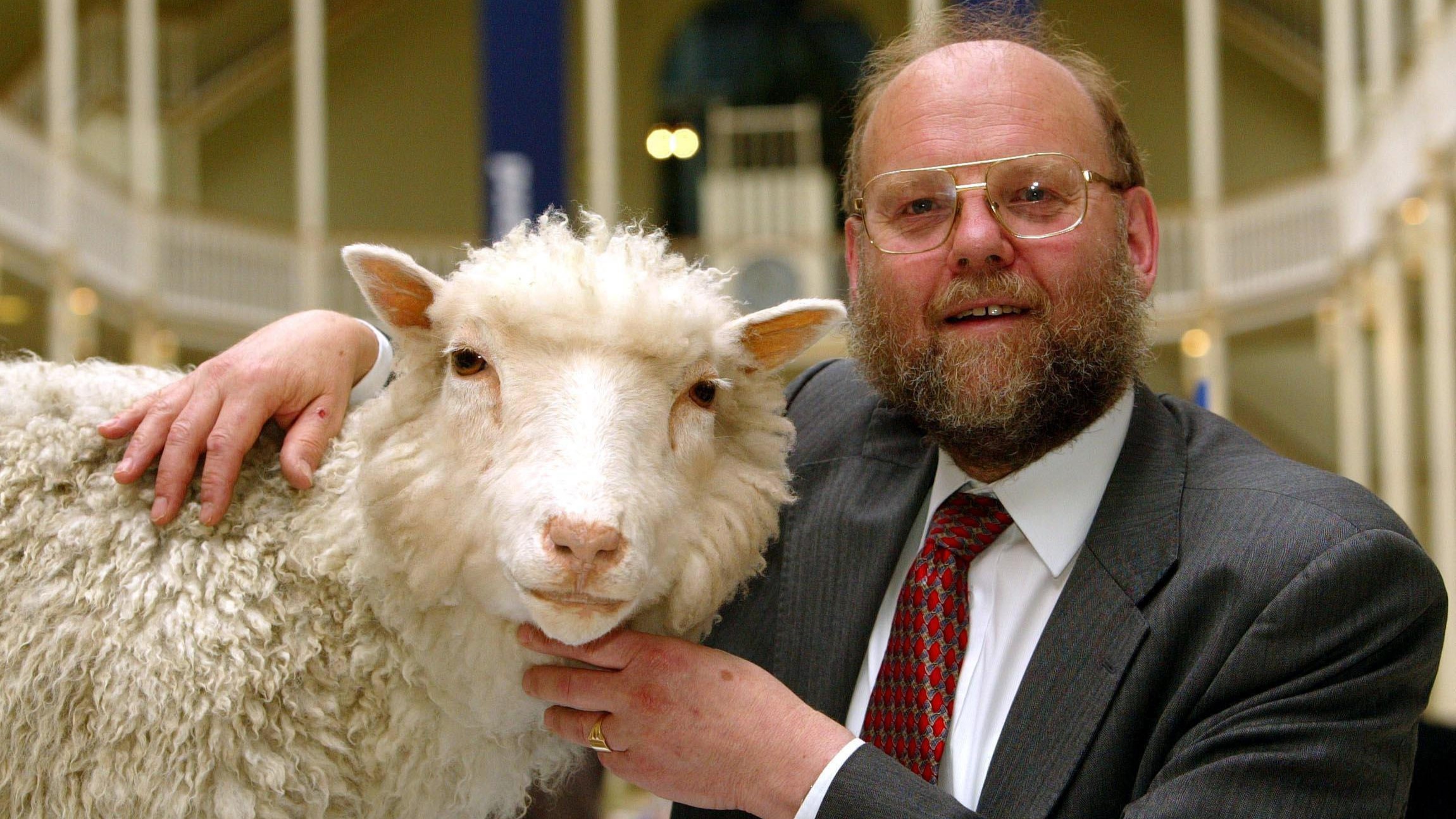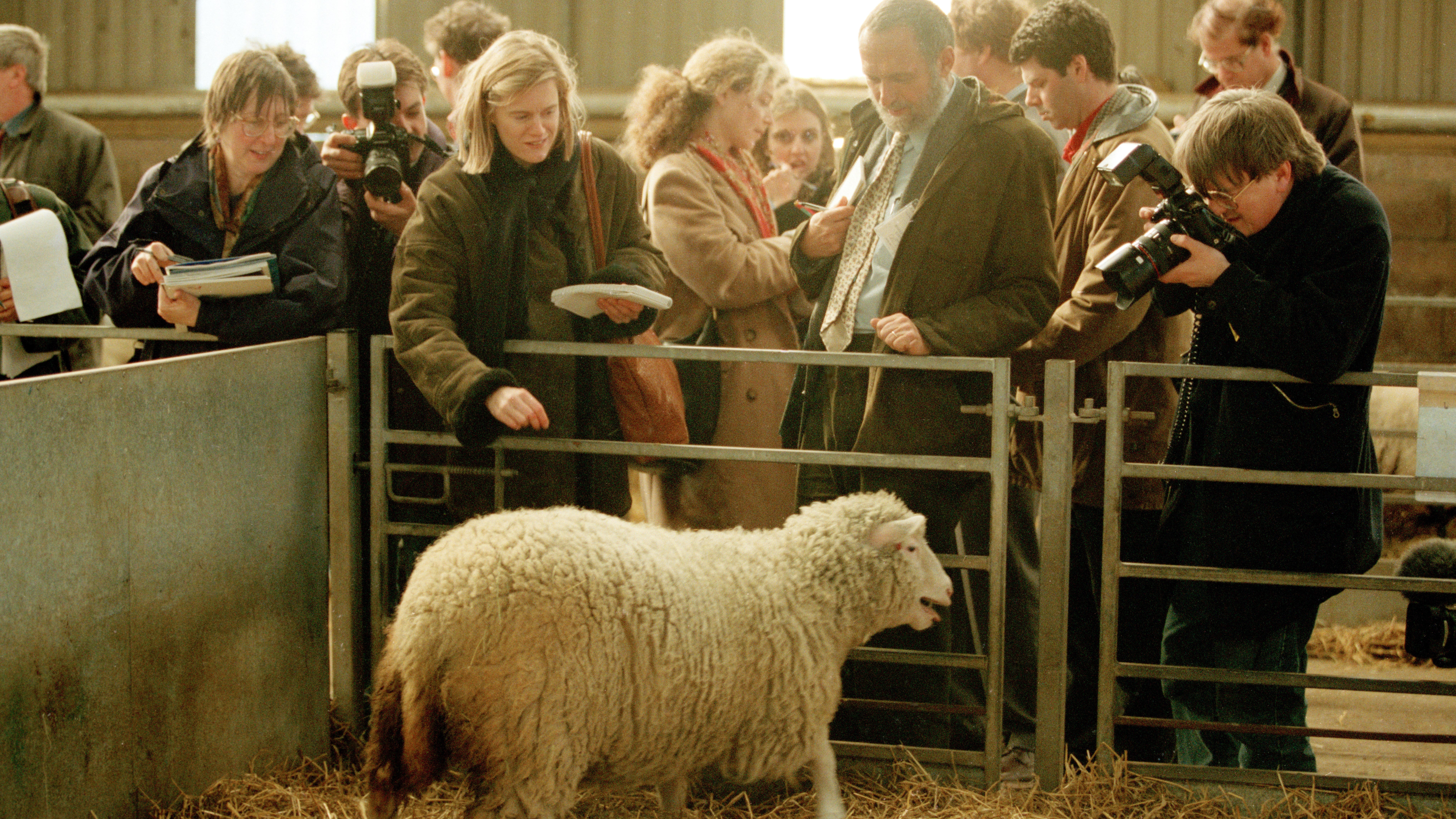Ian Wilmut, British embryologist who created Dolly the sheep clone, dies at 79
Sir Ian Wilmut was key to the successful creation of Dolly, the first mammal to be cloned from an adult cell, in 1996.

Sir Ian Wilmut, the scientist who led the cloning of Dolly the sheep, has died at the age of 79.
Wilmut led the University of Edinburgh team that successfully created Dolly, the first mammal to be cloned from an adult cell, in 1996.
Other researchers had managed to clone mammals by splitting embryos in a test tube and implanting them in adults. But Dolly — named after the singer Dolly Parton — was cloned from the mammary gland of a 6-year-old Dorset Finn ewe and was the first to be grown from an adult somatic (body) cell.
Related: Single bee is making an immortal clone army thanks to a genetic fluke
In 2017, Wilmut revealed that he had been diagnosed with Parkinson's disease.
"We are deeply saddened to hear of the passing of Professor Sir Ian Wilmut. He was a titan of the scientific world," Sir Peter Mathieson, principal and vice-chancellor of the University of Edinburgh, said in a statement.
Mathieson added that Wilmut's breakthrough "transformed scientific thinking at the time" and "continues to fuel many of the advances that have been made in the field of regenerative medicine that we see today."
Get the world’s most fascinating discoveries delivered straight to your inbox.
How was Dolly the sheep cloned?
Animals had been cloned from somatic cells before Dolly, notably frogs cloned from skin cells in 1958 by British biologist John Gurdon. But Dolly was significant because decades of failed attempts had made biologists think that the process in mammals was all but impossible.
The scientists made Dolly by extracting DNA from a cell taken from an adult sheep's mammary gland, placing it in an empty sheep egg cell and zapping it with electricity. This transformed the egg into an embryo, which was then implanted inside a surrogate sheep to bring to term.
The breakthrough led to an explosion of research into stem cells and their medical applications.
Following Dolly's July 1996 birth, pigs, deer, rats, bulls, horses and macaques were successfully cloned, and scientists soon began inducing stem cells to grow into a vast array of tissue types — driving stem cell therapy for genetic diseases into the mainstream.

How long did dolly the sheep live?
Dolly died in 2003 after living to age 6, around half the typical 10-to-12-year lifespan of a sheep, and had a number of clone sisters taken from the same batch of cells as her.
"The birth of Dolly and the new understanding of the opportunity to change the functioning of cells made researchers consider other possible ways of modifying cells," Wilmut told Live Science in 2017.
Following his work on Dolly, Wilmut continued to genetically engineer and clone sheep in an effort to make stem cells and create milk with proteins that could treat human diseases.
Wilmut retired in 2012, and received a knighthood in 2008. Following his Parkinson’s diagnosis, he took part in the testing of new types of treatments for the degenerative disease.

Ben Turner is a U.K. based writer and editor at Live Science. He covers physics and astronomy, tech and climate change. He graduated from University College London with a degree in particle physics before training as a journalist. When he's not writing, Ben enjoys reading literature, playing the guitar and embarrassing himself with chess.


